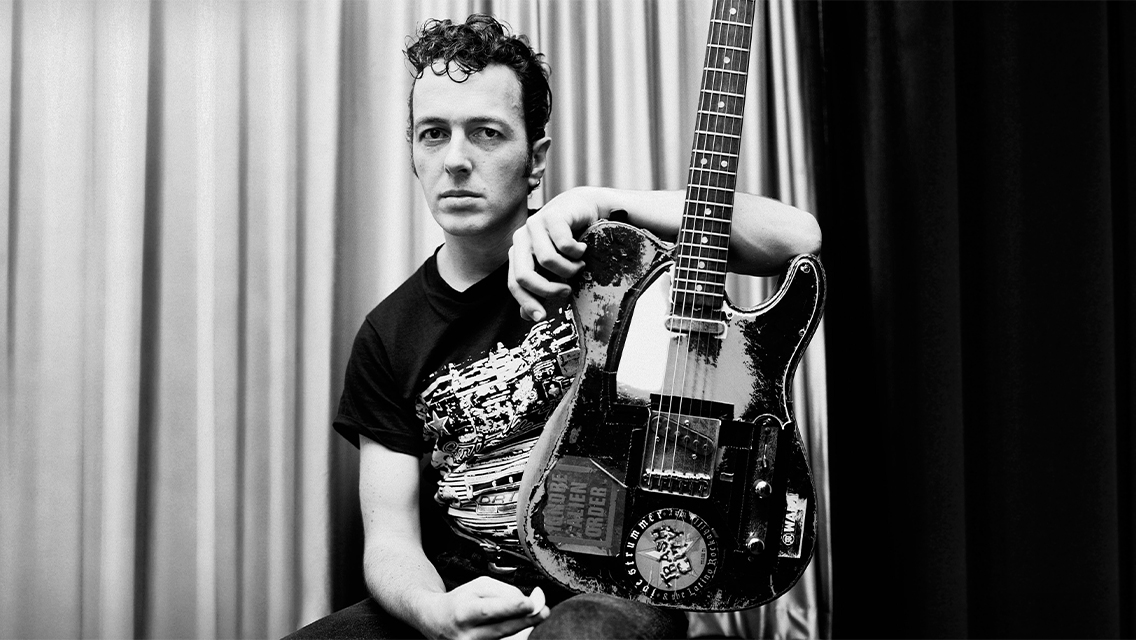
Sections
What is an Arpeggio?
The word arpeggio comes from the Italian word arpeggiare, which means to play on a harp. But don't let this curious Italian word scare you. While a chord is defined as a group of notes that are sounded together at the same time, an arpeggio, a.k.a. "broken chord," indicates a chord in which the notes are sounded individually.
For beginning players, working on arpeggios will unlock the space between strumming chords and running scales, and give you a better general understanding of musical harmony-meaning, in its broadest sense, the ways that two or more notes can interact. As a rhythm guitarist, your playing will somehow sound both fuller and more specific. As a lead player, your solos will tell a more meaningful story by better matching the passing chords of the song or progression; think of a surfer who moves in and out of a wave's different sections instead of riding straight across its face.
Aspiring jazz players and shredders will need to dig deep into this topic, but even indie-rockers and folkies looking for lusher ways to set up their vocals should take note.
Arpeggios, Chords & Scales
First, a bit of background. You've hopefully already hit upon scales in your guitar studies - perhaps the major scale and the pentatonic scale, sequences commonly used in rock and pop. Scales are linear arrangements of notes, separated by a formula of intervals, that fall under a specific key and extend from the root note to the next octave. A G major scale, for instance, begins with its root, G, and continues through the notes A, B, C, D, E and F#, toward the G an octave above the root.
If you were to record a chord progression in a certain key, you could play a solo over that progression using notes from a scale that corresponds to that key. So a I-IV-V progression in the key of G major includes the chords G, C and D - the first, fourth and fifth degrees of the G major scale - and playing notes from that scale over that series of chords will sound strong, harmonious and correct. Arpeggios are also sequential arrangements of individual notes. But unlike a scale, an arpeggio's sequence, when taken together, forms a chord.
You might have already found that you need a little extra something to solo over many of your favorite rock and pop tunes, since they often include chords that fall outside of a single key. For example, if a chord progression goes A, D, E - all in the key of A - and then F, your A major scale would sound tense and odd over that last chord. At that point in your lead, it'd be helpful to know a couple of shapes for an F major arpeggio.
Don’t miss out!
Be the first to know about new products, featured content, exclusive offers and giveaways.
Triads and Arpeggios
In understanding arpeggios, you might begin by tackling the three-note chords called triads. To start, a major triad can be constructed by stacking the thirds of a major scale; in other words, the root, third and fifth notes. If an A major triad comprises A, C# and E, an A major arpeggio would require that these notes are sounded individually. For a minor triad, the third degree is lowered a half-step, or flatted, so an A minor triad would consist of A, C and E. Other arpeggios to practice early on include the major seventh (root, third and fifth, per the major triad, plus the seventh note of the major scale), minor seventh (root, flatted third, fifth and flatted seventh) and dominant seventh (root, third, fifth and flatted seventh).
After you've made your way through this lesson, you've still got a ways to go, since arpeggios can get as dauntingly complex as chords. You should strive to master the various arpeggio shapes under the CAGED System, extending them through a couple octaves and beginning with the root note on different strings. Still, you can do a lot with just a few arpeggio variations, and to get a sense of how they can open up your soloing, let's apply some to a 12-bar blues progression.
Blues Arpeggios on Guitar
If you've soloed over a 12-bar blues at this early stage of your guitar education, you've probably been given a pentatonic scale or two to play atop the entirety of the progression. And you've most likely noticed that these five-note sequences sound A-OK. Even better, maybe you've gotten comfortable with the blues scales, which add a flatted third to the major pentatonic scale and a flatted fifth to the minor pentatonic. Plenty of players have achieved guitar-hero status by applying creative ideas to those simple scales.
But if you want to get inside the chords that your rhythm guitarist or keyboardist is playing, and if you want your playing to have a narrative feeling à la Eric Clapton, Jerry Garcia or Eric Johnson, then you should start responding to the chords in your solos instead of using only scales. (Jazz musicians, rooted in the chord-based harmony of bebop, call this playing through the changes.)
Over a 12-bar, I-IV-V progression using the dominant chords A7, D7 and E7, try using the dominant seventh arpeggio - root, third, fifth and flatted seventh - mentioned earlier. For the A7 chord, that means the notes A, C#, E and G; for the D7: D, F#, A and C; and for the E7: E, G#, B and D. To match the chords as they progress, try playing the notes of each chord's arpeggio - also called the "chord tones" - first in sequence and then as you would in a solo. Vary the dynamics of your phrases by picking with different levels of intensity; begin your lines on notes other than the root; and throw in a string bend here and there to punctuate your musical statements.
Once you've gotten comfortable with the arpeggio-based elements, start mixing them into and among licks from your scales. After soloing along to a backing track or with a friend playing rhythm, try soloing without chords supporting you, thinking of how the chords sounded earlier: Can you still hear an outline of the 12-bar blues in your playing? That should be a goal-to play single-note lines that sound as coherent as a chord progression.
Some of the most iconic rock solos of all time - Mark Knopfler on the outro of Dire Straits' "Sultans of Swing;" Don Felder and Joe Walsh on the Eagles' "Hotel California" - rely on pretty straightforward arpeggio figures. As for the luxuriant rhythm guitars of that Eagles hit, they bring us to:
Arpeggiation or Arpeggiated Chords
Strumming the guitar can most certainly take you places. All-at-once six-string contact never hurt Richie Havens, Bob Dylan, Neutral Milk Hotel's Jeff Mangum and so many other great songwriters. But the accompaniment concept of arpeggiation, or arpeggiated chords - terms you've surely seen in music reviews and guitar magazines - is also essential. You can hear it in the rich, expertly flatpicked figures of R.E.M.'s Peter Buck; the jangly multitracked masterpieces of the Smiths' Johnny Marr; and the sparkling rhythm parts of Radiohead.
Your picking hand has plenty of options: alternate picking; fingerpicking; an improvised combination of downstrokes and upstrokes; the pick-and-fingers combo called hybrid picking; and more. The most important thing is that each note be sounded individually and allowed to resonate. For a terrifically simple, direct example, take this Fender lesson on the R.E.M. classic "Everybody Hurts," whose verses seesaw between two arpeggiated open chords, D and G.
The Shred Side - Arpeggios & Metal
The metal and shred scenes are the breeding ground for the wildest and most inspired arpeggio ideas, though many of these concepts go deeper than we'll be able to in this primer. (See Yngwie Malmsteen's "Arpeggios From Hell.") Metal players use arpeggios to construct sharp-angled riffs as well as in a lead context. Try building licks using the three- and four-note arpeggio types discussed earlier; then, in shred fashion, create patterns using their inversions-meaning that the arpeggio begins on a note other than its root. Take the very metal minor 7 arpeggio in A, with its notes A, C, E and G: Beginning on C would be called the first inversion; E would be the second; and so on.
To make a simple figure into a sprawling lead worthy of YouTube, you'll need to learn to play it through a few octaves and work on your picking hand. Indeed, advanced picking technique is where rock guitar becomes shred. So look especially into sweep picking, or economy picking, in which the pick slides fluidly from one string to the next, sort of between a strum and a single-note down- or upstroke; two-handed tapping, in which both hands are applied to the fretboard in a rhythmic pattern of hammer-ons and pull-offs; string-skipping, a way to attack wide-interval licks and patterns by hopping among nonadjacent strings; and the mind-melding combination of tapping and string-skipping.
If you'd like to learn more about arpeggios, triads and chords, sign up for your free trial of Fender Play.


